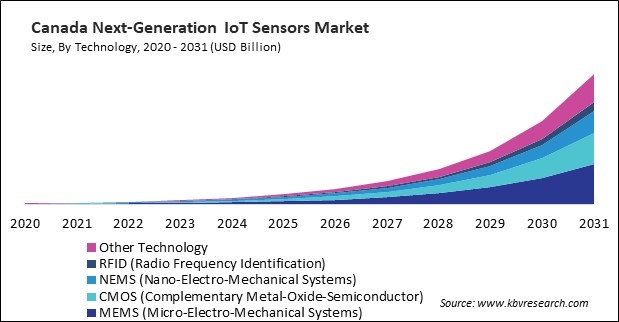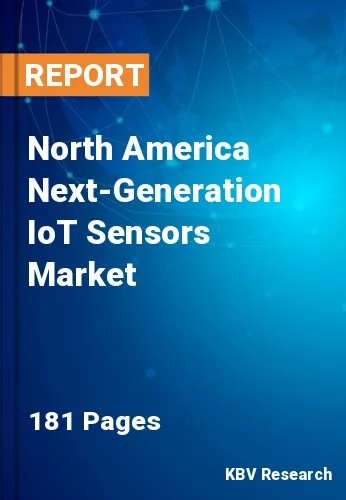The North America Next-Generation IoT Sensors Market would witness market growth of 49.1% CAGR during the forecast period (2024-2031).
The US market dominated the North America Next-Generation IoT Sensors Market by Country in 2023, and would continue to be a dominant market till 2031; thereby, achieving a market value of $15,522.7 million by 2031. The Canada market is experiencing a CAGR of 52.1% during (2024 - 2031). Additionally, The Mexico market would exhibit a CAGR of 51% during (2024 - 2031).

Next-generation IoT sensors refer to advanced, highly sophisticated sensors designed to address the evolving needs of the Internet of Things (IoT) ecosystem. These sensors have moved beyond the limitations of traditional sensors by offering enhanced capabilities in terms of sensitivity, accuracy, miniaturization, energy efficiency, and connectivity.
Additionally, these features are essential for growing IoT applications across smart cities, industrial automation, healthcare, automotive, and agriculture industries. IoT, often described as the network of interconnected devices communicating with one another and humans via the internet, has become a cornerstone of modern digital transformation.
The next-generation IoT sensors market in North America is experiencing robust growth, primarily driven by the region's advanced technological infrastructure and widespread adoption of IoT solutions. As urbanization accelerates, U.S. cities are increasingly dependent on IoT technologies to improve public safety and manage resources efficiently. IoT sensors support these efforts, allowing real-time traffic, air quality, energy consumption, and public infrastructure monitoring. The U.S. government has actively proponent of smart city initiatives, channeling substantial funding toward deploying IoT technologies.
Free Valuable Insights: The Next-Generation IoT Sensors Market is Predict to reach USD 66.14 billion by 2031, at a CAGR of 50.2%
Based on Power Source, the market is segmented into Battery-Powered Sensors, Energy-Harvesting Sensors, and Plugged-In Sensors. Based on Connectivity, the market is segmented into Wi-Fi, Bluetooth, ZigBee, LPWAN, and 5G & Other. Based on Sensor Type, the market is segmented into Temperature Sensors, Pressure Sensors, Motion Sensors, Proximity Sensors, Image Sensors, and Other Sensor Type. Based on Deployment Type, the market is segmented into Cloud-Based and On-Premises. Based on Technology, the market is segmented into MEMS (Micro-Electro-Mechanical Systems), CMOS (Complementary Metal-Oxide-Semiconductor), NEMS (Nano-Electro-Mechanical Systems), RFID (Radio Frequency Identification), and Other Technology. Based on End-Use, the market is segmented into Healthcare, Automotive, Manufacturing & Industrial, Energy & Utilities, Consumer Electronics, Transportation & Logistics, and Retail & Other. Based on countries, the market is segmented into U.S., Mexico, Canada, and Rest of North America.
By Power Source
By Connectivity
By Sensor Type
By Deployment Type
By Technology
By End-Use
By Country
Our team of dedicated experts can provide you with attractive expansion opportunities for your business.

